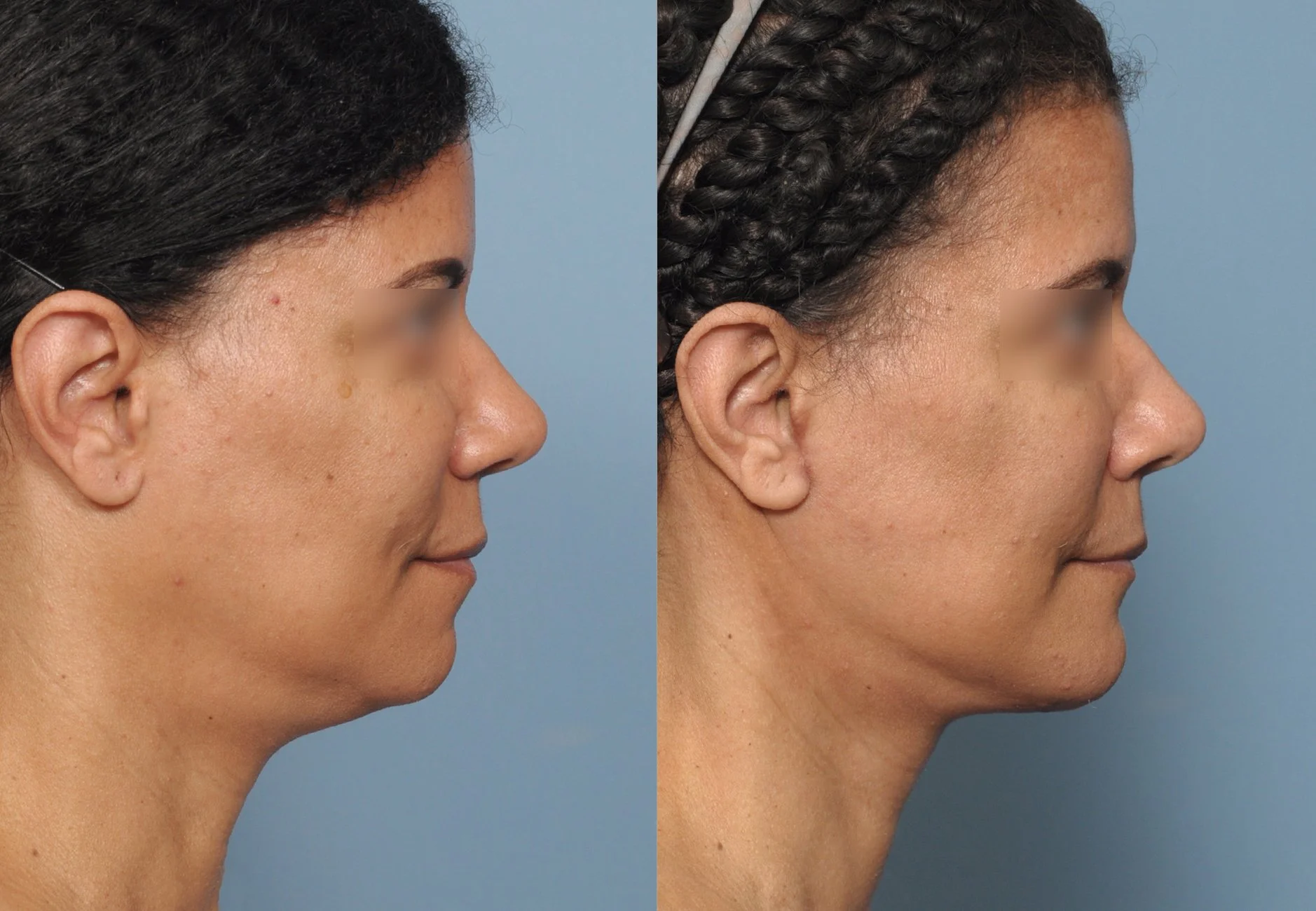With age, facial tissues tend to lose volume and descend. You may notice your face starting to become ‘bottom-heavy’ as your cheekbones and under-eye region lose volume. To provide youthful definition to these areas, a facial implant can be placed. A facial implant is a procedure in which synthetic materials, such as silicone, are used to provide permanent cosmetic definition to the face. In addition to the cheeks, the chin and jaw are two areas that can be augmented with facial implants. If you have a chin that is under-projected or a jawline that is not well-defined, an implant would balance your profile and highlight the contours of your face.
Patients seek out Dr. Hu to address all of the following:
Facial Implants
Temporal hollowing
Loss of cheekbone height
Poorly defined jawline
Recessed chin
How It Works
-
Dr. Hu will begin your consultation by listening to your concerns about your face and discussing the results you would like to achieve.
She always takes care to thoroughly explain the different thirds of the face and how to implement the desired changes using specific surgical techniques.
-
Next, Dr. Hu will take a full health history and perform a complete examination of your face and neck. With this information, Dr. Hu will create a tailored plan to help you achieve your aesthetic goals. In addition to a facial implant, Dr. Hu may recommend adjunct procedures such as a neck lift to further enhance your jawline and neck angle or a rhinoplasty to establish a balanced profile.
Additionally, we can show you the potential results of these surgical techniques with our specialized imaging software! This allows us to promote an open dialogue as we progress to the next steps.
-
Finally, Dr. Hu and her clinical team will discuss the details of the surgery, pricing, how to plan for it, and what to expect after.
Facial implant surgery is performed on-site in a state-of-the-art private operating suite at AIREM. Sedation is administered by a board-certified anesthesiologist, and the procedure will take around 1-2 hours, depending on the location and number of implants. Following this, you will recover in a private room for a few hours. Once you are awake enough, a family member or friend can escort you from the facility back home. For the first 24 hours following surgery, someone must be available to take care of you.
Recovery Process
-
You will need to plan for time to recover, which varies by individual, but is usually around one week. There may be a mild-to-moderate amount of redness, bruising, and swelling during this time. You may notice swelling increasing around day 3 or 4. Most patients are socially presentable toward the end of the week if only implants were placed.
Since you have stitches inside the mouth, you will need to rinse your mouth a few times a day with a medicated mouthwash and take an antibiotic. You should start on a liquid diet and advance toward a regular diet as tolerated. Avoid any foods with sharp edges or that require significant chewing. It is important to relax as much as possible, while still making sure to walk around when you can, and sleep with the head of your bed slightly elevated. Outside of light walking, you should not exercise.
-
At your one week appointment, all sutures that have not dissolved will be clipped.
-
At the end of week 2, you can restart any light aerobic exercise as long as you do not lift anything greater than 10 pounds, which will have to wait until week 3. From week 3 on, you may experience minor fluctuations in the small amount of swelling that remains. You will notice continued improvements in your appearance until 6 months after the surgery, at which point you will be thrilled with the final results.
